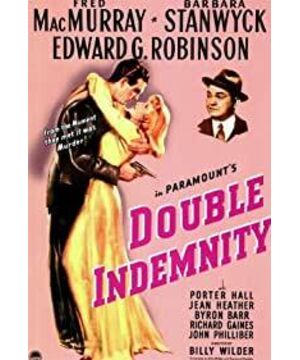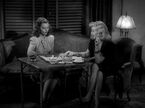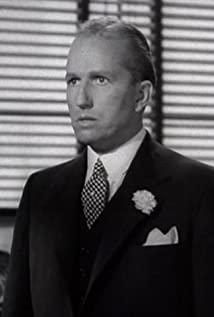On the development of film noir in China, the United States and South Korea
Film noir arose in Hollywood in the 1940s and 1950s. At that time, American detective crime films became popular in France. Most of these films reflected the darkness of human nature, social corruption, violence and crime, showing an expressionist style of light and shadow. French film critic Nino Frank captured the common style of these films and proposed the concept of film noir on the basis of "fiction noir". Film noir has a typical crime theme and a clear gloomy atmosphere, as well as a very distinctive character setting. In the original Hollywood noir films, characters were generally middle-class, misguided by lust or greed, often tied up with fate and doom, turned away from the world, and got into trouble. The shadow-filled high-contrast lighting, while presenting a gloomy visual spectacle, also often implies that the protagonist is trapped and restricted and shrouded in darkness. After experiencing the extreme aesthetics of film noir in the 1940s and 1950s, in the 1960s and 1970s, with the color innovation of black and white film, the formal aesthetic language of film noir also changed, and it developed into the period of "new film noir". Cinema still seems to be alive and well, and the origins of film noir come from the United States, but it is not limited to the United States. Each country has its own localized development and changes. Under the unique and different national context, film noir has become a flexible type carrier and aesthetic symbol: social issues, human nature exploration, criminal thinking, the bottom Ecology and even absurd comedies, film noir aesthetics are suitable for different types of performances, but its expressive "blackness" image style is indelible, showing enduring vitality. In the following, I will find out the similarities and differences in the formal aesthetics and thematic connotations expressed in the localized noir films of China, the United States and South Korea in the order of historical development.
"Double Indemnity" - America's "Distress"
"Double Indemnity" is the representative work of American film master Billy Wilder's film noir in 1944. It sets a benchmark for the standard style of film noir. It has the most primitive film noir aesthetic characteristics: a large number of city streets are used as the background. , the contrast between light and dark caused by high-intensity light, and the depression and cramping caused by composition. In terms of narrative structure, director Wilder explained the suspense at the beginning, and then gradually retraced the whole process with the voice-over narration of the protagonist. The characters seem to be affected by the plot, tricked by fate, and shrouded by bad luck, and the "trapped" also comes from this. Reading the classics carefully, it is not difficult to find that no matter from the character setting, lighting style or even the setting of female characters, it seems to be revolving around the theme of being "trapped".
American film scholar Nare Moore has summed up six sources of the origin of film noir: rising crime rates in the United States, the rise of neorealism about violence after World War II, the widespread institutionalization and popularization of psychoanalysis, hardcore crime fiction, and the rise of European cinema. Influence (should specifically refer to German Expressionism where Billy Wilder is located) and the gradual rise of horror films (Universal), gangster films (Warner Co.), classic detective films (Fox company). The "difficulty" shown in "Double Indemnity" seems to be a social phenomenon that emerged after the transformation of American social ideology after World War II. The protagonist Naf also reflects the identity that American men experienced at that time. Crisis, in the rapid development of the industrial process after World War II in the United States, more and more individuals have become impersonal members of the mechanized replication. It is difficult for people to grasp the fate of individuals in this rapidly developing world, thus producing the same protagonist. Identity anxiety. In terms of light and shadow settings, directors often use cramped compositions and clever lighting settings to show that the characters are bound and shrouded in darkness. At the end, when the protagonist Nave made up his mind to murder, his face was only half-lit, with a strong contrast of light and dark, which also showed the inner reality and contradictions of the protagonist, which was in line with the theme. Another obvious feature is the use of windows and shutters. When the light hits the shutters, it can show a striped shadow pattern, like the light and shadow of a prison, which seems to imprison the protagonist in his psychological predicament. Secondly, the image of the "scorpion woman" created by the glamorous and unfeeling heroine Phyllis is also an important element of film noir. Their initiative is restrained by the patriarchal society in the film. Although Phyllis is in the film It uses men, manipulates men and destroys men, but it is a symbolic expression after all. In film noir, the image of a femme fatale often adds mystery and uncertainty to the film. To sum up, in "Double Indemnity", the film shows the tragic fate of a struggling "sandwich" middle class , around the "sleepy", a highly expressive character building, light and shadow form and narrative structure are set up.
"The Yellow Sea" - Korea's "Hate"
There are certain historical reasons for the rapid development of noir films in South Korea. In the 1950s, South Korea was poor and chaotic because of the war. People felt the confusion and unease of their identity, and they had complex ambivalence about the country, society and the future. . In addition, the Korean cinema was infiltrated by Hollywood in the United States at that time, and the national discourse expression was limited, but it also had a great impact on the local creation of Korean films. From this point of view, the pessimism shrouded in South Korea coincides with the struggle, confusion, and predicament conveyed by film noir. Former South Korean President Kim Dae-jung once said, "Throughout history, we have been living in "hatred", but because we harbor "hatred" of our country and our country, we have always been able to comfort and motivate ourselves, so we can live for the future." This kind of "hate" means that film noir quickly took root in South Korea, and it also derived some differences.
"Yellow Sea" is a relatively black work in Korean films. The film portrays an anti-hero black character, Gyu-nam, who was forced to go to Seoul to kill a man because he could not repay his debts, while secretly investigating the whereabouts of his wife. , later became the target of the police and assignees due to the exposure of the matter, and fell into deep despair. In the film, the protagonist Jiu Nanqi is motivated by "hate", and this extreme motive makes the plot of forced murder believable and powerful. Like American noir films, the predicament that Jiu Nan is caught in is passive, and the fatalism he expresses is also reflected here. Neither Jiu Nan nor the assignee, Mr. Mian, failed to achieve their wishes and goals and died tragically in a foreign land. Korean film noir is more vivid and intuitive in the performance of bloody violence. Compared with the light and shadow forms of the 1940s in the United States, South Korea adopts more intuitive blood, fighting, and death to show the dark theme under the surface. The theme of "Yellow Sea" is obvious. It shows the different experiences of Koreans in China and South Korea, discusses the confusion of identity, and exposes the deep problems of contemporary history and social reality. Regarding the femme fatale, the role of women has always been a symbolic aphasia in film noir, but in "Yellow Sea", the image of women (Junan's wife in South Korea) is not emphasized, but its role influences males. The behavior of the protagonist, looking at the Korean film noir, the gold in "Kindly Gold" and the mido in "Old Boy", you can see that these femme fatales are no longer static and glamorous and sexy, and they no longer represent danger and mystery. It seems that In the new film noir, South Korea thinks more about the social issue of gender equality. "Hate" is repeatedly expressed in Korean films. It is a unique re-encoding that incorporates national characteristics, and the class and social issues revealed in it are more profound and powerful than the noir films of more than half a century ago. .
"Party at Southern Station" - "Love" in China
When film noir also has a unique discourse expression in China, with the process of reform and opening up, domestic directors have gradually come into contact with western film noir, and Zhang Yuan's "Beijing Bastard" is the beginning of Chinese local film noir. We can watch it. From the ecology of the little people at the bottom shown in the film, and the dark side of the city after the prosperity of the city. It can be seen from this that when the traditional American noir films have undergone major adaptations in the integration of Chinese localization, we pay more attention to the old-time aborigines and small people living at the bottom, who are deeply impacted by modern industrialization and the washing of material civilization. , such a rapid social change makes them have a kind of identity anxiety and distrust of social rules, which is the case with Diao Yinan.
In Diao Yinan's work, his narrative space is often dilapidated worker dormitories and abandoned factories, dimly lit dance halls and hair salons. His protagonists are always in a complex mood of anxiety, tension and anger. It is because of this that we can see Diao Yinan's humanistic care and emotional expression. The two protagonists Liu Ai'ai and Zhou Zenong in "The Party at the Southern Station" are both lonely and depressed. The transition of roles in the film can always more accurately show the complex world of the characters' inner hearts. Zhou Zenong is both a murderer and a responsible person. husband and father. It can be seen that Chinese local noir films are more focused on the emotional expression of the characters' multiple identities and the corresponding perceptual judgments displayed in the face of crimes. In the performance of visual scenery, today's black elements have become more diverse and rich: large-scale night scene lighting and neon lights with a sense of the times, fluorescent light strips on the soles of square dance shoes, wet and dirty food stalls and hotels, these elements It makes the whole film look gorgeous and weird. The continuation and inheritance of German Expressionism is also evident in "The Gathering at the Southern Station". The irregular and unbalanced repressed composition renders a feeling of anxiety and unease. We also pay attention to the female voice of film noir, where the traditional image of a femme fatale is replaced by a complex image played by Liu Ai'ai, who was supposed to approach Zhou Zenong and get a bounty, but after Zhou's rescue and Zhou's love for his wife Later, she chose to help Zhou and his wife. In Chinese noir films, it is not difficult to find that the gentleness and kindness of women's characters are developed, and at the same time, they often realize their own awakening after experiencing criminal events. Just like Liu Ai'ai's awakening in "The Party at Southern Station" makes her more rational and calmer than Zhou Zenong, who can influence the choice of male characters while realizing self-realization. "Love" comes from the emotion of ritual and righteousness in traditional Chinese culture, which is a reflection and discussion of society, and the humanistic concern of the director himself has become a bright color under the dark image.
Whether film noir is a style or a genre or a particular period of film history like the French New Wave, I don't think it matters. Film noir itself is powerful enough. It is more like a very inclusive shell. Different times and different nations have different expressions of emotional core. Perhaps this is the charming charm of genre films. They are timeless. Under the interpretation of several generations of filmmakers, film noir is increasingly gaining inexhaustible vitality in the dark.
View more about Double Indemnity reviews











